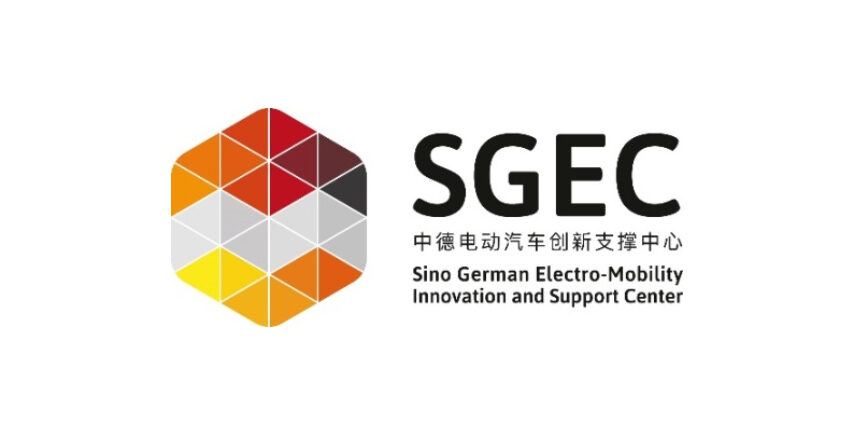Project outlines for German-Chinese research and development cooperation projects in the field of hydrogen and fuel cell vehicles can now be submitted. The call for projects is part of the “Sino German Electro Mobility Innovation and Support Center (SGEC)”. The SGEC unites and coordinates activities and projects of the German-Chinese cooperation on electric mobility with both battery and hydrogen fuel cell technology, which exists between the BMDV and the Chinese MoST.
General
The SGEC promotes supra-regional scientific exchange with China and the implementation of market-oriented demonstration projects. The SGEC projects are politically supported by the Federal Ministry of Digital and Transport (BMDV – Bundesministerium für Digitales und Verkehr) and the Ministry of Science and Technology (MoST) of the People’s Republic of China.
The objective of the projects funded within the framework of the SGEC is to support the market ramp-up of battery-powered vehicles and vehicles equipped with hydrogen fuel cells. At the same time, the focus is not least on the mutual exchange of experience from which the German and Chinese sides can both benefit.
Project outlines for German-Chinese research and development cooperation projects in the field of hydrogen and fuel cell vehicles can now be submitted to the National Innovation Programme Hydrogen and Fuel Cell Technology (NIP), until 31 December 2022.
Requirements for SGEC R&D projects
SGEC R&D cooperation projects must consist of one German and one Chinese partner project. There should be cooperation between these two projects that generates added value for both sides. The BMDV welcomes the participation of industry and research institutions.
The German project partners submit their project outline, which has been coordinated with the Chinese cooperation project, for funding under the BMDV’s funding guidelines. In parallel, the Chinese cooperation project submits its project outline for the relevant funding call of MoST in China.
Among the points to be covered in the project outline are the following:
- What roles do the German and Chinese projects each play in the cooperation?
- Who is to be supported (companies, research institutions)?
- How is the cooperation between the two projects organised?
- What is the (cross-project) added value for Germany and also for China?
- Where is the utilisation / added value through the cooperation / project?
Funding guideline and documents
- On the German side, the NIP II funding guidelines apply: NIP-II-Foerderrichtlinie-FEI-2021.pdf
- Funding applications/project outlines can now be submitted via the federal government’s easy-Online Portal: R&D&I – Outline Template (docx) (in German). The separate deadline for the SGEC is 31 December 2022.
Contacts
Interested parties and applicants on the German side should contact the relevant SGEC thematic area managers with any questions:
Hydrogen-Fuel Cell mobility (incl. infrastructure)
Contacts: Xiaowen Xu / Simon Verleger
Company: hySOLUTIONS GmbH
Email:
Phone: +49 40 3288 -39 62/ -44 75
Safety
Contacts: Hubert Landinger / Reinhold Wurster
Company: Ludwig-Bölkow-Systemtechnik GmbH (LBST)
Email:
Phone: +49 89 608110-37
Integration of renewable energies (incl. power-based fuels)
Contacts: Frederik Budschun / Alexander Böddeker
Company: EE ENERGY ENGINEERS GmbH
Email:
Phone: +49 160 911 631 66
Central point of contact for the SGEC
Contact: Jaqueline May Ives – Programme Manager Asia
Company: NOW GmbH
Email:
Phone: +49 172 417 35 67
Thematic priorities of SGEC research and development cooperation projects
The BMDV especially welcomes cooperation projects that address one of the following three main topics:
Focal point 1: Common standards and procedures for the performance and health status assessment of fuel cells
- Formulation and definition of measurement and evaluation criteria for the performance and ageing of fuel cells
- Development of measurement and evaluation procedures for performance and ageing measurement
- Development of methods and test procedures to induce and detect an accelerated ageing process of fuel cells and components
Focal point 2: Investigation of hydrogen release and dispersion at hydrogen plants and in mobility applications with reference to safety, standards and regulations
- Investigation of the H2 dispersion behaviour at leakage points or blow-outs or chimneys in actual environments including surrounding buildings as well as effects from weather conditions
- Development and definition of a common understanding of safety, limits, protective measures, standards and regulations related to hydrogen release and dispersion
Focal point 3: Consideration and development of methods for assessing CO2 footprint and sustainability
- Development of methods to assess the sustainability (CO2 footprint) of clean and low-carbon hydrogen and fuel cells for use in vehicles
- Development of technical standards and guidelines related to production, transport/storage and operation as well as disposal
- Identification of potentials for reducing the CO2 footprint/strengthening sustainability for hydrogen, components and systems


